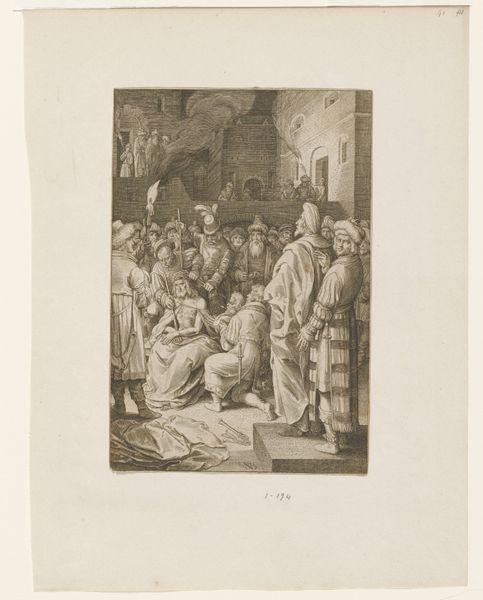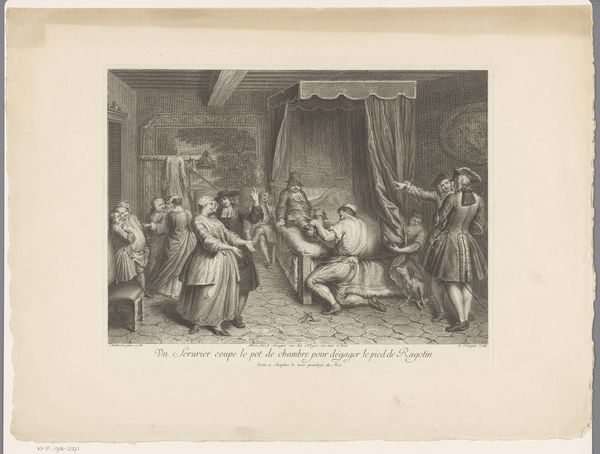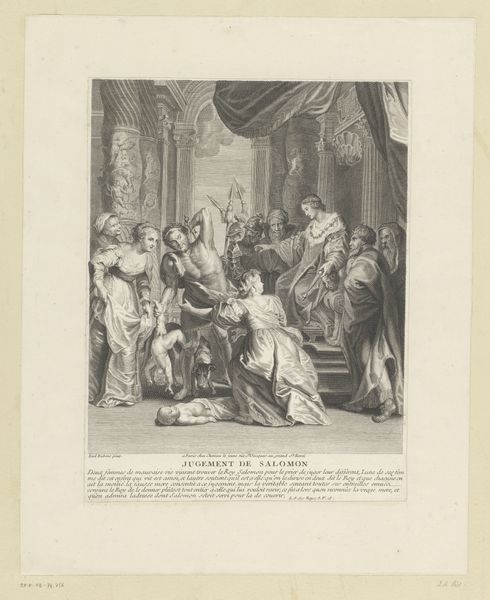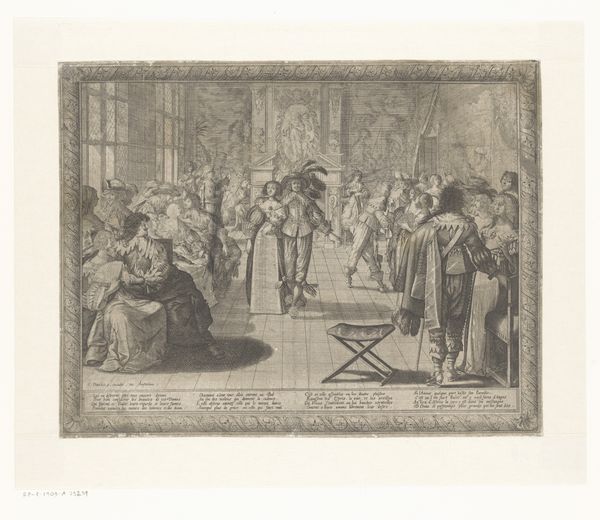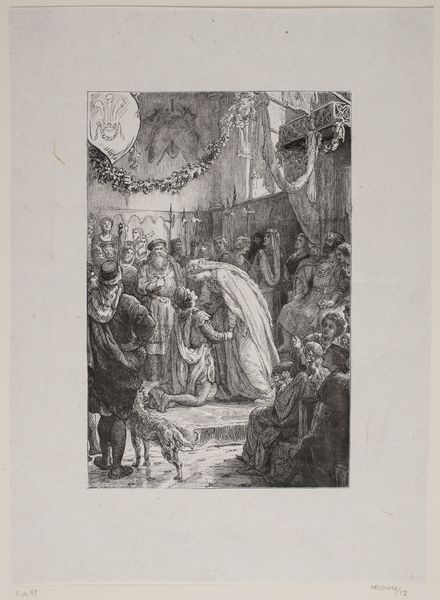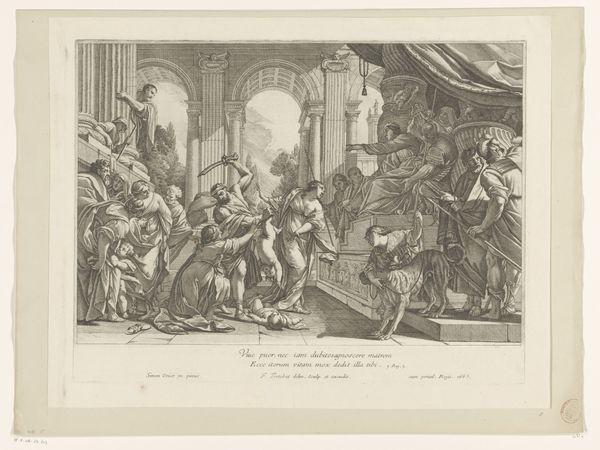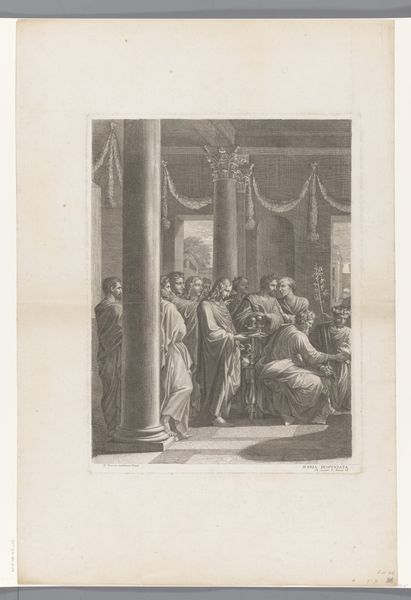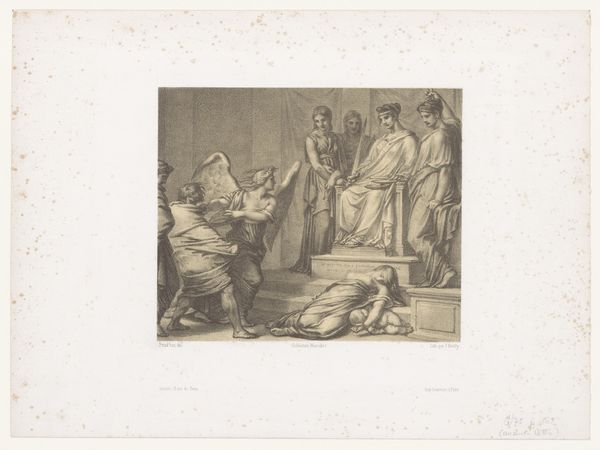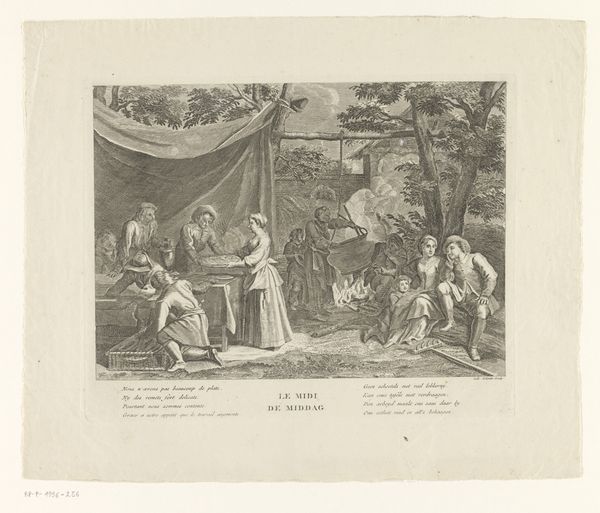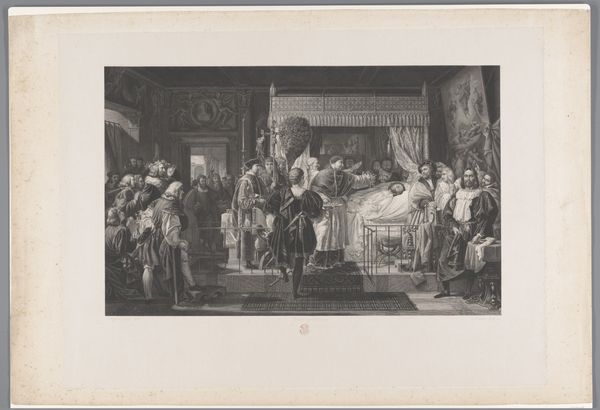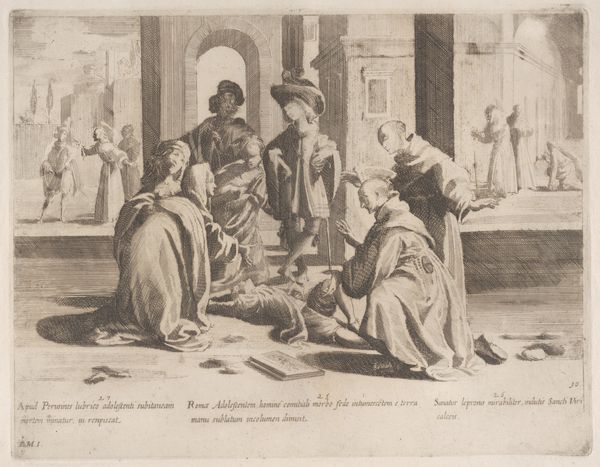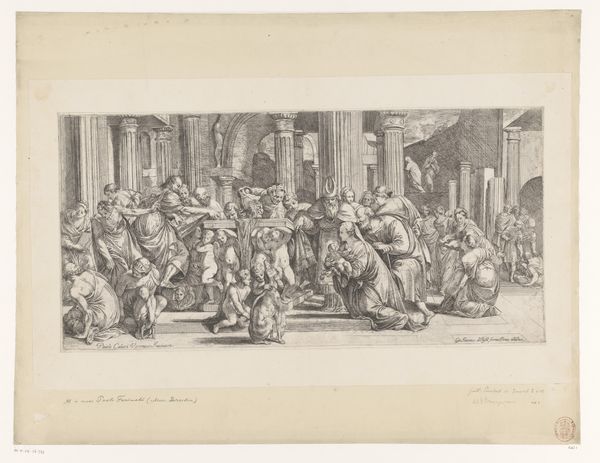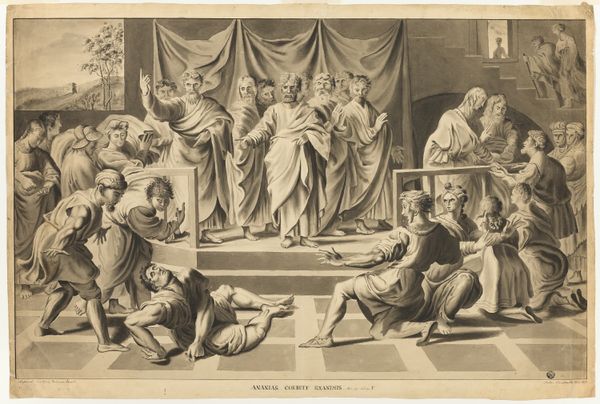
print, etching, engraving
#
baroque
#
ink paper printed
# print
#
etching
#
old engraving style
#
ink drawing experimentation
#
history-painting
#
engraving
Dimensions: height 235 mm, width 317 mm
Copyright: Rijks Museum: Open Domain
Curator: This is "Heilige Franciscus Xaverius voor de Japanse heerser Ōtomo Sōrin," an engraving and etching by Johann Georg Waldreich, dating to 1675. It’s rendered in ink on paper. Editor: My initial impression is one of carefully orchestrated drama. There's a definite tension created by the stark contrast between the dark inks and blank space and all the bodies filling it, pressing against each other. The Baroque era loved this sort of dynamic energy, didn’t they? Curator: Precisely! Waldreich masterfully uses line weight and hatching to create depth and direct the eye. The composition is cleverly balanced, mirroring the hierarchical structure of the scene itself—from the angelic figures floating above, down to the scribes seated below. Semiotically, we see this play out through the strategic employment of symbols—the open book on the floor, versus the angelic imagery aloft. Editor: And let’s consider the actual making of this print— the etched lines bitten into the metal plate, the application of ink, and the immense social effort that goes into disseminating this image. How many impressions were made? Who owned them? And why this scene of St. Francis Xavier’s encounter with a Japanese ruler? How did that process impact the laborers of the period? What exactly were they consuming through such distribution? Curator: A good point about social context: prints, as a reproductive medium, expanded the reach of artistic ideas. In Waldreich’s case, we can observe it impacting art. This piece creates a complex, layered interplay between European religious zeal and its representation in another part of the world—through these starkly presented semiotic components of heavenly status, power, and devotion. Editor: Consider what an etching like this meant to a predominantly illiterate public, too. An image, carefully crafted with lines and tones, could serve as propaganda, instruction, and perhaps, most importantly, commodity. It embodies complex negotiations between material existence and spiritual transcendence that continue today. Curator: Absolutely. By observing Waldreich's Baroque-style compositional construction, this reveals deeper implications than a quick consideration might at first provide. Editor: Indeed. Thinking about this work in terms of its material production really grounds us in a crucial time.
Comments
No comments
Be the first to comment and join the conversation on the ultimate creative platform.
